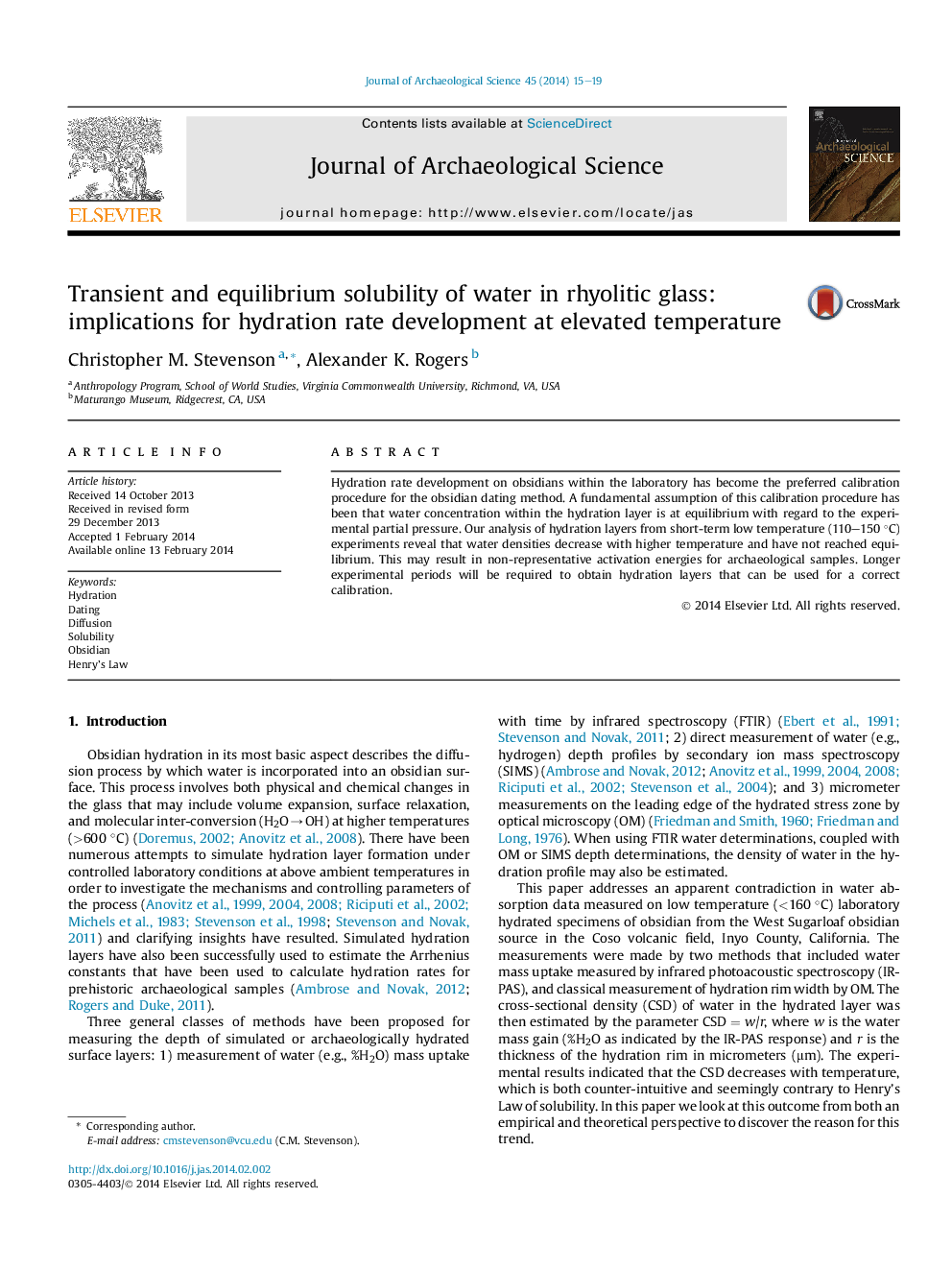| Article ID | Journal | Published Year | Pages | File Type |
|---|---|---|---|---|
| 7443344 | Journal of Archaeological Science | 2014 | 5 Pages |
Abstract
Hydration rate development on obsidians within the laboratory has become the preferred calibration procedure for the obsidian dating method. A fundamental assumption of this calibration procedure has been that water concentration within the hydration layer is at equilibrium with regard to the experimental partial pressure. Our analysis of hydration layers from short-term low temperature (110-150 °C) experiments reveal that water densities decrease with higher temperature and have not reached equilibrium. This may result in non-representative activation energies for archaeological samples. Longer experimental periods will be required to obtain hydration layers that can be used for a correct calibration.
Related Topics
Physical Sciences and Engineering
Materials Science
Materials Science (General)
Authors
Christopher M. Stevenson, Alexander K. Rogers,
